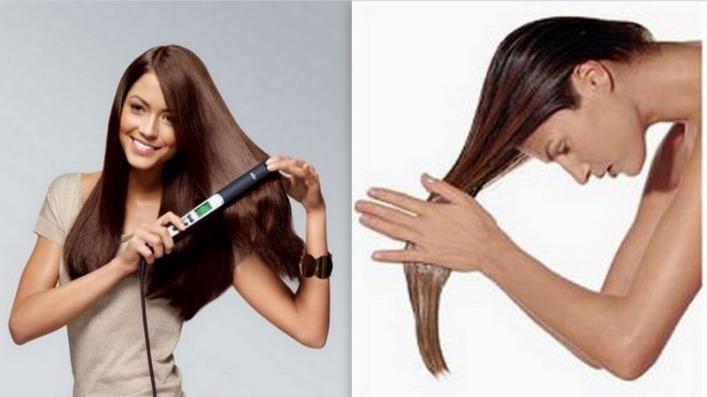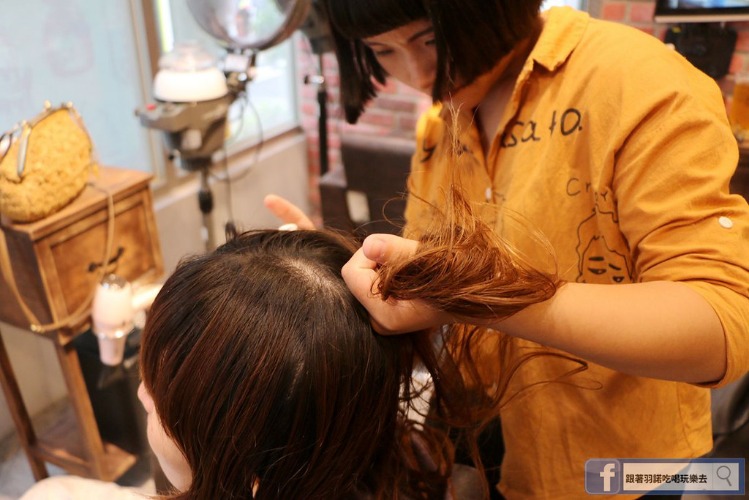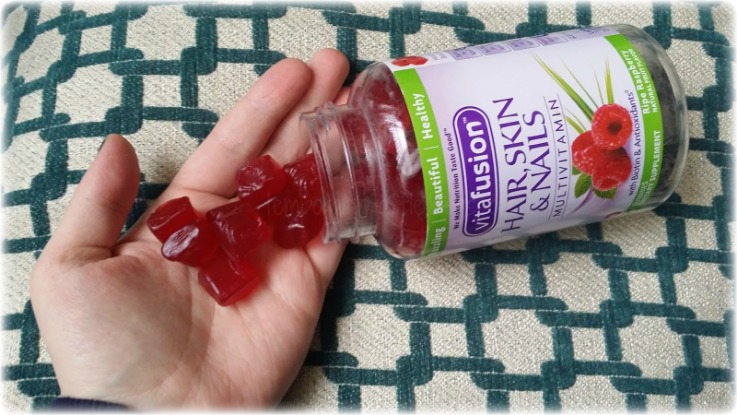Post-Wash Hair Care Tips
Proper hair care after washing is essential to keep your hair healthy, shiny, and manageable. Post-wash hair care tips help prevent damage, reduce frizz, and maintain the overall condition of your hair. Implementing simple routines can make a significant difference in the health and appearance of your hair every day.
Drying Techniques
Proper post-wash hair care is essential to maintain healthy, shiny hair and prevent damage. Drying techniques play a crucial role in ensuring your hair stays well-nourished and strong after washing.
- Gently squeeze out excess water with a soft towel instead of rubbing vigorously to reduce breakage.
- Pat your hair dry with a microfiber towel or a cotton t-shirt to minimize frizz and damage.
- Allow your hair to air-dry whenever possible to avoid heat damage from blow dryers.
- If using a blow dryer, set it to a low or cool setting and keep it at a safe distance from your scalp.
- Use a heat protectant spray before applying any heat styling tools to shield your hair from damage.
- Resist the temptation to frequently towel-dry or blow-dry; let your hair dry naturally when you can.
- Apply leave-in conditioner or hair serum to damp hair for added moisture and protection.
- Detangle your hair gently with a wide-tooth comb after drying to prevent breakage.
Choosing the Right Towel
After washing your hair, proper post-wash care is essential to maintain its health and shine. One of the important steps is choosing the right towel to gently dry your hair without causing damage. Opt for a soft, absorbent microfiber towel or a cotton T-shirt rather than rough, terry cloth towels, which can cause friction and lead to breakage. Gently squeeze out excess water rather than rubbing your hair vigorously, and pat it dry to minimize frizz and hair damage. Additionally, avoid using a high heat setting when blow-drying, and consider applying leave-in conditioners or serums to protect and nourish your hair. Incorporating these tips into your routine ensures your hair stays healthy, shiny, and well-maintained after every wash.
Air Drying vs. Towel Drying
Proper post-wash hair care is essential to maintain healthy, frizz-free, and shiny hair. Choosing the right drying method can significantly impact the health of your hair, so understanding the differences between air drying and towel drying is important.
Air drying allows your hair to dry naturally without heat, reducing the risk of damage and dryness. It is gentle on hair strands and helps retain natural moisture, resulting in softer, less frizzy hair. However, air drying can take longer, especially in humid or cold weather.
Towel drying involves gently patting or squeezing out excess water with a towel. While quick and convenient, vigorous towel drying or using rough towels can cause breakage, frizz, and damage. To minimize harm, opt for a soft microfiber towel and avoid rubbing your hair vigorously.
- Allow your hair to air dry whenever possible for healthier, less damaged hair.
- If you need to towel dry, gently pat your hair instead of rubbing to reduce breakage.
- Use a microfiber towel or an old cotton T-shirt to absorb excess water gently.
- Apply leave-in conditioners or styling products while your hair is damp to protect and style effectively.
- Consider detangling your hair carefully with a wide-tooth comb to prevent breakage during drying.
- For faster drying, you can use a diffuser attachment on a low heat setting, but avoid high heat to prevent damage.
Applying Leave-In Products
Applying leave-in products is an essential step in hair care after washing, helping to enhance manageability, add moisture, and protect hair throughout the day. These products provide a lightweight, nourishing layer that can improve the overall health and appearance of your hair. Proper application ensures maximum benefit, leaving your hair looking shiny, smooth, and well-maintained.
Leave-In Conditioners
Applying leave-in products and conditioners is an essential step in hair care after washing. These products help to hydrate, detangle, and protect the hair throughout the day. To start, gently squeeze out excess water from your hair after washing to prevent dilution of the product. Then, take a small amount of leave-in conditioner or treatment and distribute it evenly through damp strands, focusing on mid-lengths and ends. Using a wide-tooth comb can help detangle the hair smoothly and evenly. Allow the hair to air dry or style as desired, knowing that these products provide ongoing moisture and protection against damage. Incorporating leave-in conditioners into your routine enhances softness, manageability, and overall hair health.
Serums and Oils
Applying leave-in products, serums, and oils after washing your hair is essential for maintaining healthy, nourished, and manageable hair. These products help to lock in moisture, add shine, and protect your hair from environmental damage throughout the day. To achieve the best results, start with towel-dried hair, gently remove excess water, and then apply a small amount of the product evenly from mid-length to ends. Avoid applying too close to the scalp unless specified, as this can cause buildup or make hair look greasy. Distribute the product with your fingers or a wide-tooth comb to ensure even coverage. Regular use of these styling aids can improve hair texture, reduce frizz, and promote overall hair health.
Detangling Hair
Detangling hair is an essential step in maintaining healthy and manageable hair after washing. Proper detangling minimizes breakage, reduces hair fall, and keeps your hair looking smooth and shiny. Learning the right techniques and using suitable tools can make this process easier, especially for those with thick, curly, or long hair. In this article, we will explore effective tips for detangling hair gently and efficiently to enhance your overall hair care routine.
Using Wide-Tooth Combs
Using a wide-tooth comb is an essential step in hair care after washing, as it helps to detangle wet hair gently without causing breakage. Wet hair is more vulnerable, and improper combing can lead to damage and split ends. A wide-tooth comb evenly distributes natural oils from the scalp along the hair strands, promoting healthier and shinier hair. It is advisable to start combing from the ends and gradually work up to the roots, ensuring knots are loosened carefully. Incorporating this gentle method into your hair care routine can maintain hair strength, reduce frizz, and encourage smooth, manageable hair.
Gentle Detangling Tips
Proper detangling is essential for maintaining healthy, shiny hair after washing. Gentle techniques can prevent breakage and reduce frustration, especially with tangled or wet hair. Start by patting your hair dry with a soft towel to remove excess water, then apply a conditioner or a detangling spray to add slip and make the process easier. Using a wide-tooth comb, begin detangling from the ends, working your way up toward the roots with patience and gentle strokes. Avoid pulling or tugging, which can cause damage. For stubborn knots, hold the section of hair above the knot to prevent strain on the roots. Regularly detangling with care helps distribute natural oils and keeps your hair looking smooth and healthy after every wash.
Protecting Hair Overnight
Proper hair care after washing is essential for maintaining healthy, shiny, and strong hair. Protecting your hair overnight can help prevent damage, dryness, and breakage, ensuring your locks stay vibrant and well-nourished. By adopting simple overnight hair protection techniques, you can enhance your hair’s overall health and enjoy beautiful, manageable hair every day.
Pillowcase Materials
Protecting your hair overnight is essential for maintaining healthy and styled hair after a wash. Choosing the right pillowcase material can significantly reduce friction, frizz, and breakage while helping your hair retain moisture and style. Silk and satin pillowcases are highly recommended because their smooth surfaces minimize friction, preventing damage and tangles. Cotton pillowcases, while common, can cause more friction and absorb moisture from your hair, leading to dryness and frizz. For optimal hair care after washing, consider switching to silk or satin pillowcases to keep your hair in better condition overnight and wake up with smoother, more manageable hair. Additionally, tying your hair in loose braids or using a silk scarf can further protect your hair during sleep.
Protective Hairstyles for Sleep
Protecting your hair overnight is essential for maintaining its health and ensuring that your hairstyle stays fresh. After washing your hair, adopting protective hairstyles can minimize damage and prevent tangling while you sleep. These styles help reduce friction from your bedding, which can lead to breakage and split ends.
Popular protective hairstyles for sleep include braids, twists, buns, or plaits, which keep your hair contained and prevent it from becoming knotted or frizzy overnight. Using satin or silk pillowcases or wrapping your hair with a satin scarf can also reduce friction and retain moisture, keeping your hair hydrated and smooth. Remember to gently detangle your hair before styling and avoid tight hairstyles to prevent tension on your scalp. Incorporating these tips into your bedtime routine can promote healthier, stronger hair over time.
Heat Styling Prevention
Proper hair care after washing is essential to maintain healthy, shiny hair and prevent damage caused by heat styling tools. Implementing simple prevention techniques can help protect your locks from the harmful effects of heat, ensuring they stay strong and vibrant. By adopting thoughtful practices, you can enjoy beautiful, well-maintained hair without relying on frequent heat styling.
Reducing Heat Damage
After washing your hair, it is essential to adopt heat styling prevention techniques to maintain healthy hair and minimize damage. Allow your hair to air dry whenever possible to reduce exposure to heat from blow dryers and styling tools. When using heat styling equipment is necessary, always apply a heat protectant spray or serum to create a barrier against high temperatures. Keep your styling tools at the lowest effective heat setting and avoid prolonged contact with the hair to prevent excessive dryness and breakage. Additionally, limiting the frequency of heat styling and giving your hair regular breaks can significantly improve its overall health and resilience.
Alternative Styling Techniques
After washing your hair, protecting it from heat damage is essential to maintain healthy, shiny hair. To prevent the negative effects of heat styling tools, it’s best to minimize their use and explore alternative styling techniques that don’t rely on high temperatures. Air-drying your hair whenever possible allows natural oils to nourish and hydrate your strands, reducing the need for heat-based drying methods. Using microfiber towels or soft t-shirts to gently squeeze excess water can also help minimize breakage and frizz without damaging the cuticle. For styling, consider braiding damp hair to create waves or buns for effortless curls that require no heat. Utilize stretch and set methods like silk scarves or hair wraps to achieve volume and shape without turning on your hot tools. When heat styling is necessary, always apply a heat protectant product beforehand and opt for lower heat settings to limit damage. Incorporating these alternative techniques into your hair care routine promotes healthier hair while still achieving your desired look.
Maintaining Hair Hydration
Maintaining hair hydration after washing is essential for healthy, shiny, and manageable hair. Proper hydration helps prevent dryness, breakage, and frizz, keeping your hair looking its best throughout the day. By incorporating simple yet effective hydrating practices into your hair care routine, you can ensure your hair remains moisturized, soft, and vibrant even after each wash.

Hydrating Sprays
Maintaining hair hydration after washing is essential to keep your hair healthy, shiny, and manageable. Using hydrating sprays can be an effective way to restore moisture and prevent dryness or frizz throughout the day. These sprays are formulated with nourishing ingredients such as aloe vera, glycerin, or botanical extracts that help lock in moisture without weighing down the hair. Incorporating a hydrating spray into your hair care routine can refresh your hair, improve combability, and protect against environmental damage. Make sure to choose a spray suited to your hair type and use it gently on damp or dry hair for optimal hydration benefits.
Humidifiers and Environment
Maintaining hair hydration after washing is essential for healthy, shiny hair. Using a humidifier in your home can help preserve moisture in the air, which in turn prevents your hair from becoming dry and brittle. Ensuring that your environment has optimal humidity levels can significantly reduce static, frizz, and dryness, especially during colder months when indoor heating tends to dry out the air. Additionally, incorporating hydrating hair products such asLeave-in conditioners and hair oils can lock in moisture effectively. Remember to avoid excessive heat styling and exposure to harsh environmental factors that can strip moisture from your hair. Creating a balanced environment with proper humidity and using nourishing hair care routines will help maintain optimal hydration and overall hair health.
Regular Hair Care Routine
Establishing a regular hair care routine after washing is essential for maintaining healthy, shiny, and well-nourished hair. Proper post-wash habits help to enhance hair strength, manageability, and overall appearance. By incorporating simple and effective practices, you can ensure your hair stays vibrant and protected from damage.
Scheduling Washes
Establishing a regular hair care routine after washing your hair is essential for maintaining healthy, clean, and shiny locks. Scheduling washes appropriately helps prevent scalp buildup and keeps your hair looking its best. It is recommended to wash hair every two to three days, depending on your hair type and activity levels. For oily hair, more frequent washes may be necessary, while dry or curly hair benefits from less frequent washing to retain natural oils. Incorporate a gentle shampoo followed by a nourishing conditioner to keep hair hydrated and manageable. Additionally, using hair masks or oils once a week can provide extra moisture and repair. Consistency in your hair washing schedule ensures optimal scalp health and reduces the risk of damage and dryness. Remember to adjust your routine as needed to suit changes in weather, lifestyle, and hair condition for the best results.
Incorporating Scalp Care
Maintaining a regular hair care routine after washing is essential to keep your hair healthy and vibrant. Incorporating scalp care into this routine helps to promote proper scalp health, which is the foundation for strong, shiny hair. Begin by gently massaging your scalp with your fingertips to stimulate blood flow and exfoliate any buildup. Use a mild, sulfate-free shampoo suited to your hair type, and ensure you rinse thoroughly to remove all residues. Follow with a nourishing conditioner to hydrate the strands without weighing them down. After rinsing, gently pat your hair dry with a towel instead of rubbing, to minimize breakage. Consider applying a lightweight scalp serum or oil to maintain moisture and prevent dryness or dandruff. Regularly brushing your hair with a natural bristle brush helps distribute oils from your scalp to the ends, promoting natural shine and scalp health. Additionally, avoid excessive heat styling and protect your hair from environmental damage. Incorporating these steps into your post-wash routine ensures your scalp remains healthy, supporting overall hair vitality and beauty.



